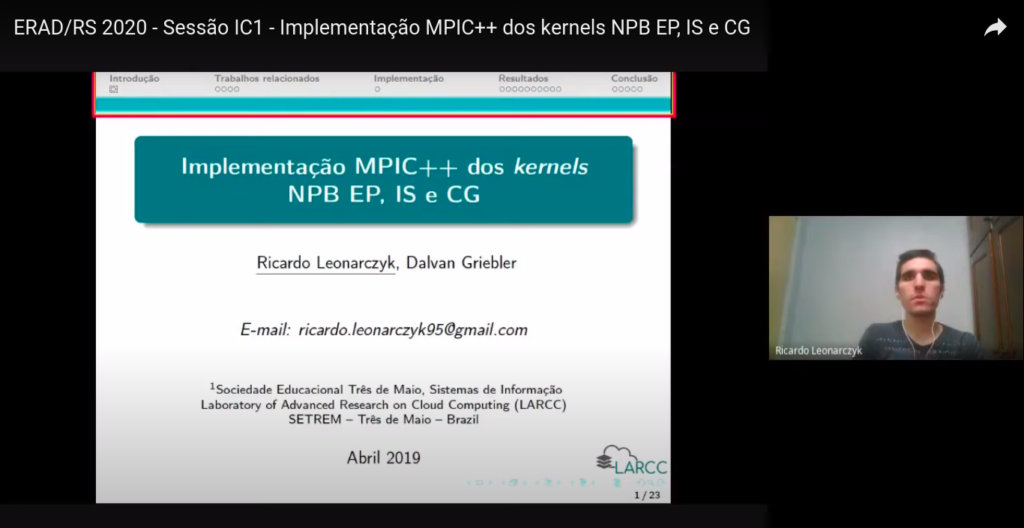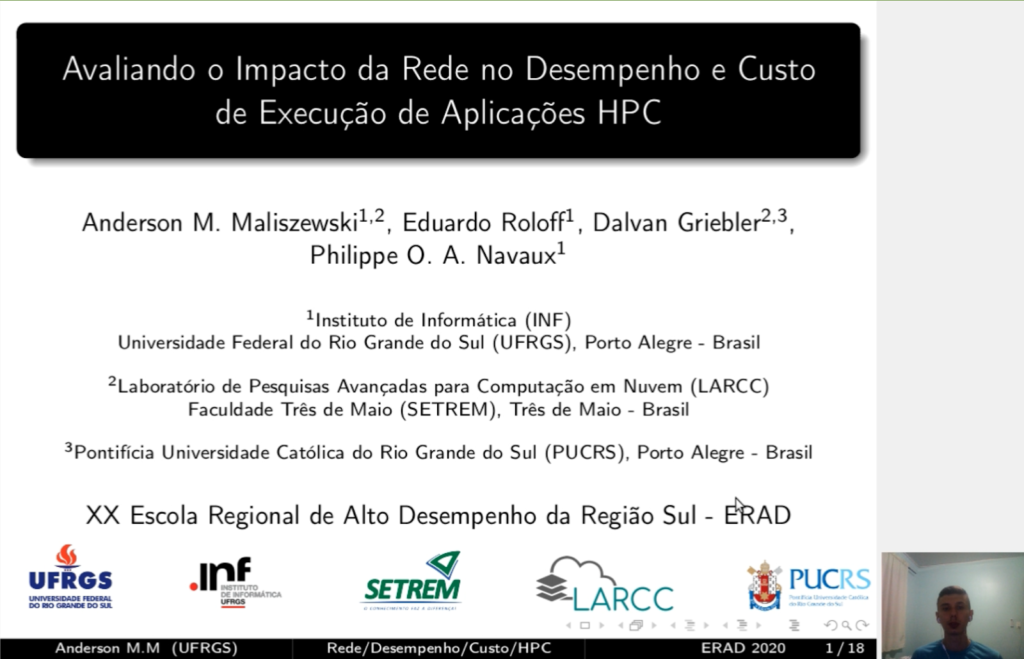Organized by the Federal University of Santa Maria (UFSM), the 20th ERAD/RS (Escola Regional de Alto Desempenho da Região Sul) took place in April. Exceptionally this year, due to the COVID-19 pandemic, the event was completely virtual. Advised by Prof. Dalvan (LARCC coordinator), two students presented their research work.
Ricardo Leonarczyk presented on April 14th the article entitled “MPIC ++ implementation of NPB EP, IS and CG kernels” in the Scientific Initiation Session. His work aims to contribute with previous efforts on making the NAS Parallel benchmarks available for the C ++ language, however, focusing on distributed memory programming with MPI. This benchmark was originally created by NASA engineers (National Aeronautics and Space Administration) and is available in Fortran. It is a set of programs that represents the fluid dynamics application domain. These algorithms are used to design NASA rockets. The article presented the results achieved for CG, EP and IS that were ported from the original MPI version to MPI C++ version. The experiments carried out demonstrated that the new version of the benchmarks achieved a performance close to the original. The main contribution is to allow other researchers or professionals to use and test C++ programming tools, as well as to evaluate the performance of large-scale supercomputers and computational systems.
The article is a partial result of the undergraduate thesis that is being developed. The complete presentation is available at https://youtu.be/fE5ZNMvCNks.
Master student Anderson Mattheus Maliszewski (UFRGS) presented on April 17th the article entitled “Avaliando o Impacto da Rede no Desempenho e Custo de Execução de Aplicações HPC”. This work seeks to continue previous work in the area of computer networks, evaluating the impact that the interconnection has on parallel programs, using the Gigabit Ethernet standard or a high-performance area (HPC) interconnection like InfiniBand. Thus, experiments were carried out in which results were obtained on the performance of synthetic and real applications and the estimated cost. As a result, the network interconnection plays a crucial role in applications that have intensive network usage, significantly optimizing its performance.
The article presents the partial results for the Master’s Dissertation of the Computer Science course – UFRGS, supervised by Prof. Philippe Navaux (UFRGS) and co-supervised by Prof. Dalvan Griebler (LARCC coordinator). The complete presentation is available at https://youtu.be/ohat4NXIIX8.




